In-ear headphones are a specific form factor that not everyone likes. But if you prefer this design, then you should definitely pay attention to Huawei FreeBuds 5. They have many significant advantages. Unusual futuristic design, comfortable construction with a secure fit, pleasant sound quality (especially considering the design), and an effective active noise cancellation system. Additional pleasant moments include very fast charging and good microphones. The only problem is the price. The headphones will go on sale in the near future for 6000 UAH. There are many interesting competitors in this price range, both in-ear and in-channel. Including Noble Audio and Samsung models.
5 reasons to buy Huawei FreeBuds 5:
- high-quality sound (taking into account the design);
- effective active noise cancellation system;
- original design and comfortable shape;
- IPX4 protection;
- very fast charging.
2 reasons not to buy Huawei FreeBuds 5:
- you prefer in-channel closed models;
- many interesting competitors with a similar or lower price.
Quick transition:
- What's in the box?
- What do Huawei FreeBuds 5 look like?
- Is Huawei FreeBuds 5 convenient to use?
- What about sound quality, microphone, and noise cancellation?
- How long do they last without recharging?
- In dry balance
What's in the box?
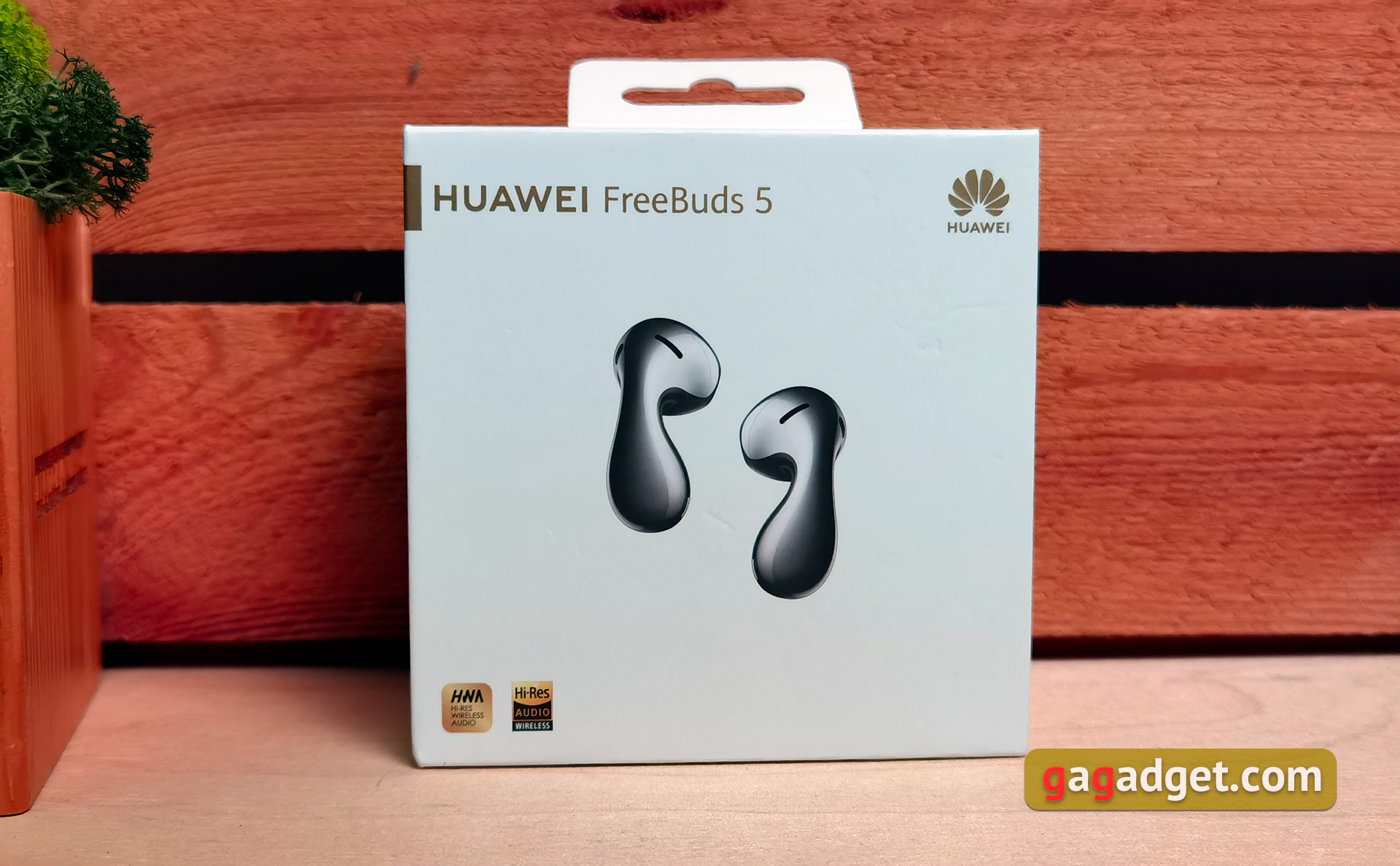
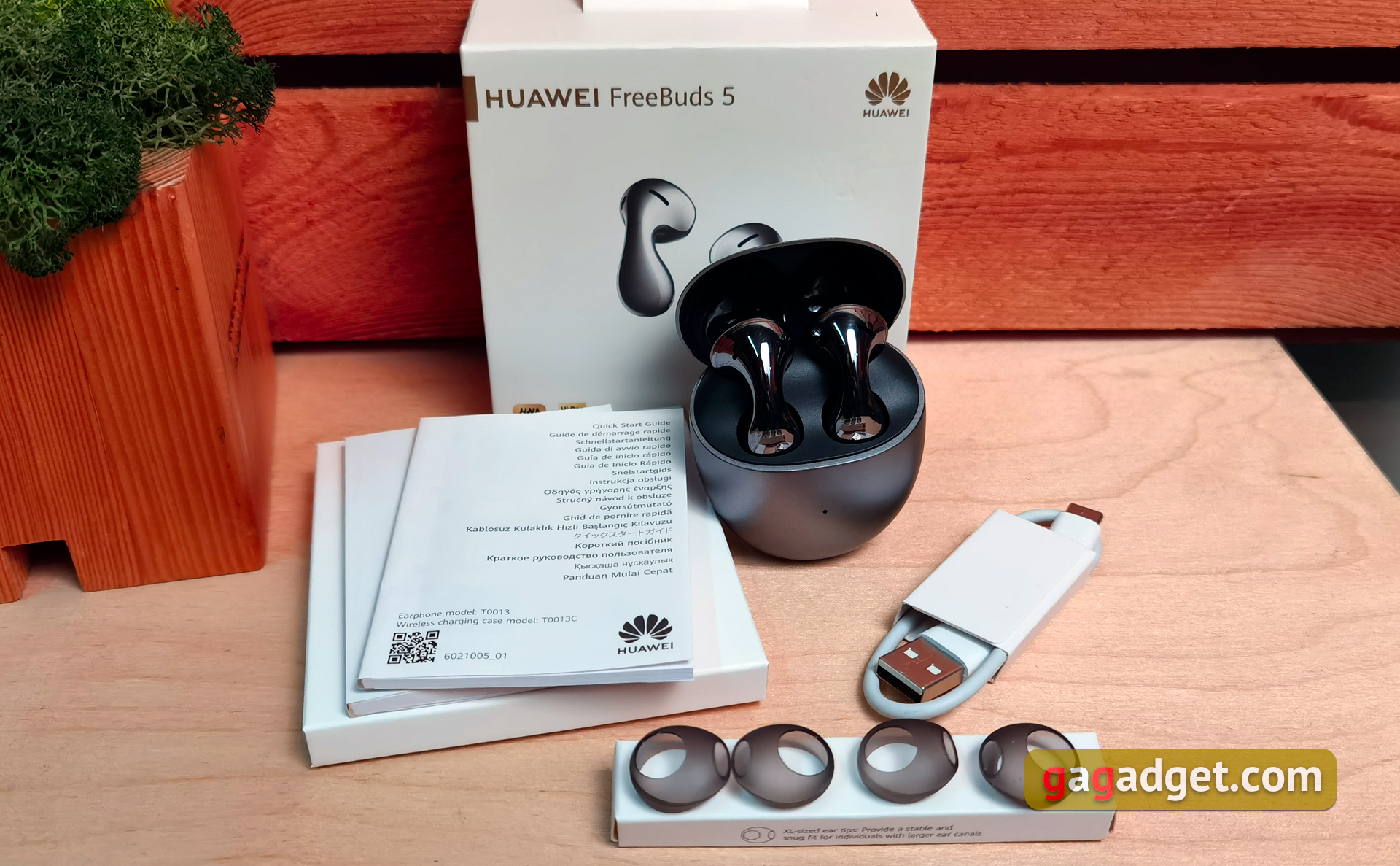
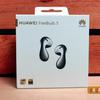
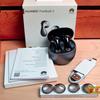
The headphones are packaged in the standard way for Huawei models. It's a small box made of thick white cardboard with a removable lid, which has an image and name, the manufacturer's logo, and a pair of Wireless Hi-Res Audio icons. The box contains the headphones themselves in a charging case, two pairs of silicone pads for a more secure fit in the ears, a USB Type-A to Type-C cable, and documentation.
What do Huawei FreeBuds 5 look like?
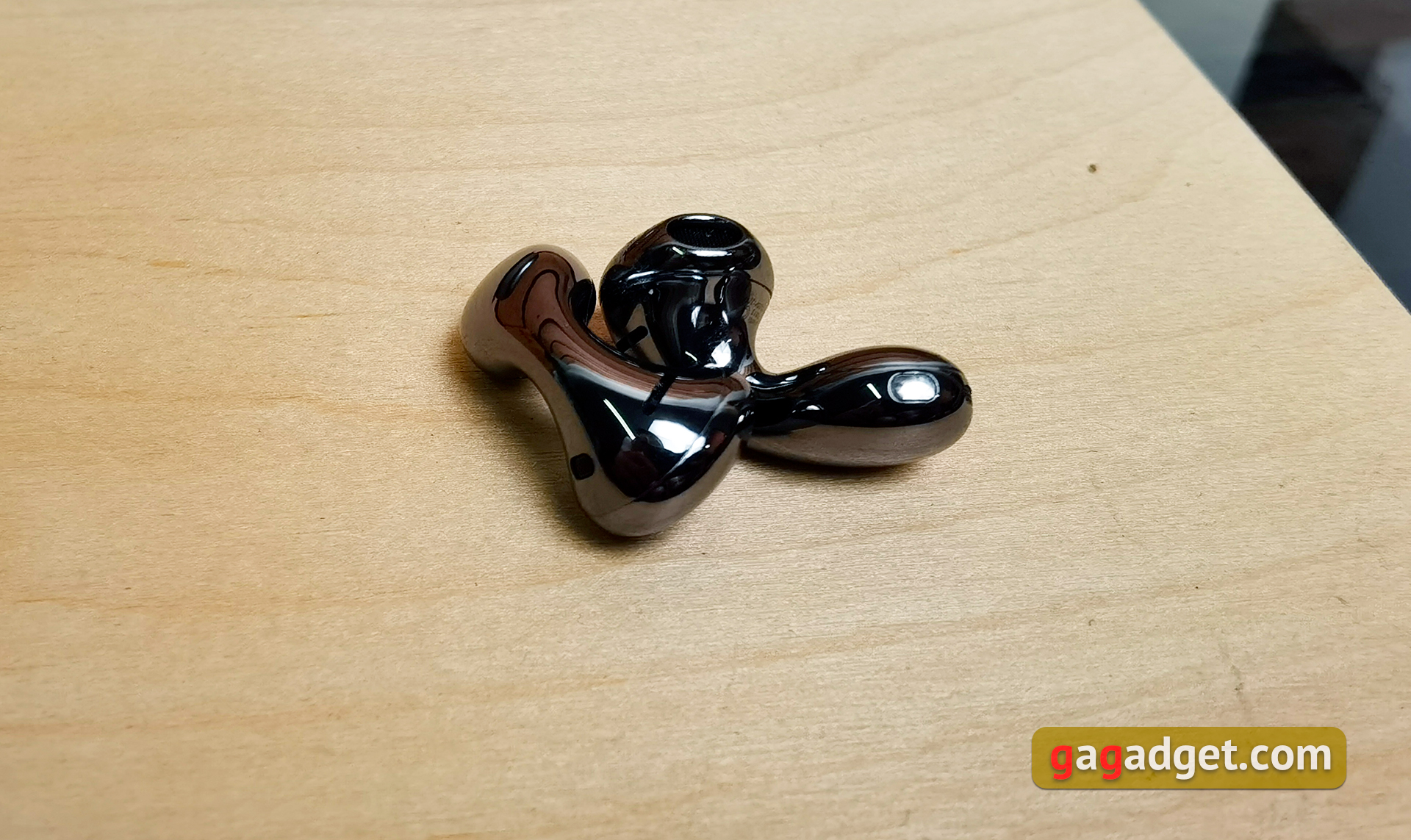
The Huawei FreeBuds line of TWS headphones has a very clear structure. Models with just a number at the end are in-ear, with the letter i after the number are mid-range in-ear models (in other words, earbuds) and with the Pro at the end of the name are flagship in-ear headphones. Huawei FreeBuds 5 did not deviate from this tradition: these are in-ear headphones with an open acoustic design. But their design is very unusual. It is quite difficult to compare their shape with anything. It resembles two drops connected by a touch of oil. They look especially impressive in silver colour. It looks like liquid metal. Huawei claims to have been inspired by the shape of frozen drops of tempered glass, the so-called Prince Rupert drops (or Dutch drops). They are formed when molten glass is dripped into cold water. The glass hardens into a teardrop shape with a long, thin tail.
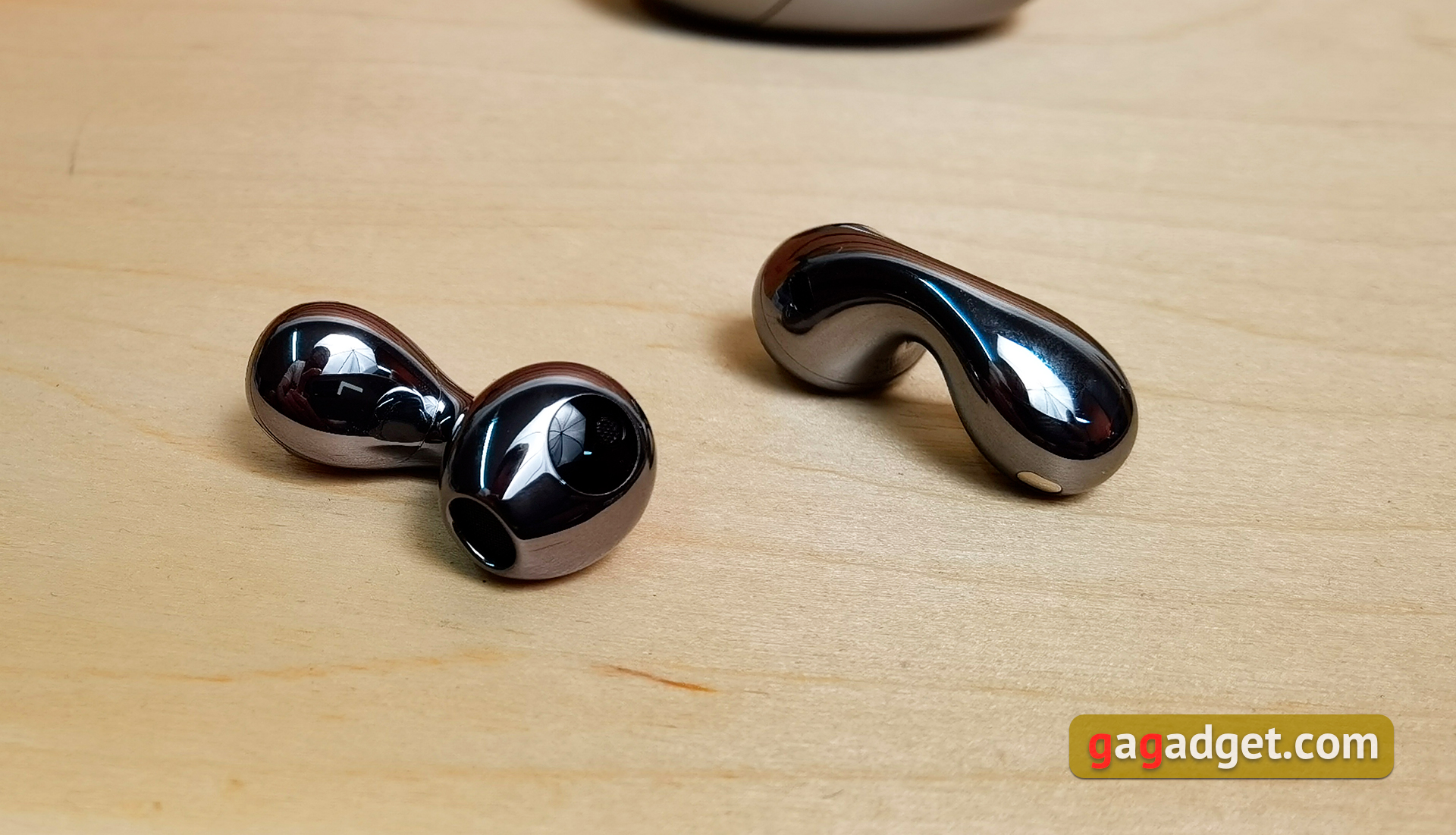
Due to the smooth lines and overall streamlined shape, the headphones look compact in the pictures. In reality, they turned out to be slightly larger than expected. But this did not affect the comfort. The sound wires are quite short and wide, which is quite usual for in-ear headphones. There is a mesh inside to prevent dirt from getting inside. Nearby on the inside of the headphone there is an infrared sensor for detecting wearing and one of the microphones of the noise reduction system. There is another microphone on the outer part of the headphones on top. On the inside of the legs there are markings for the left and right headphones. Touch panels for control occupy most of the outer part of the headphones.
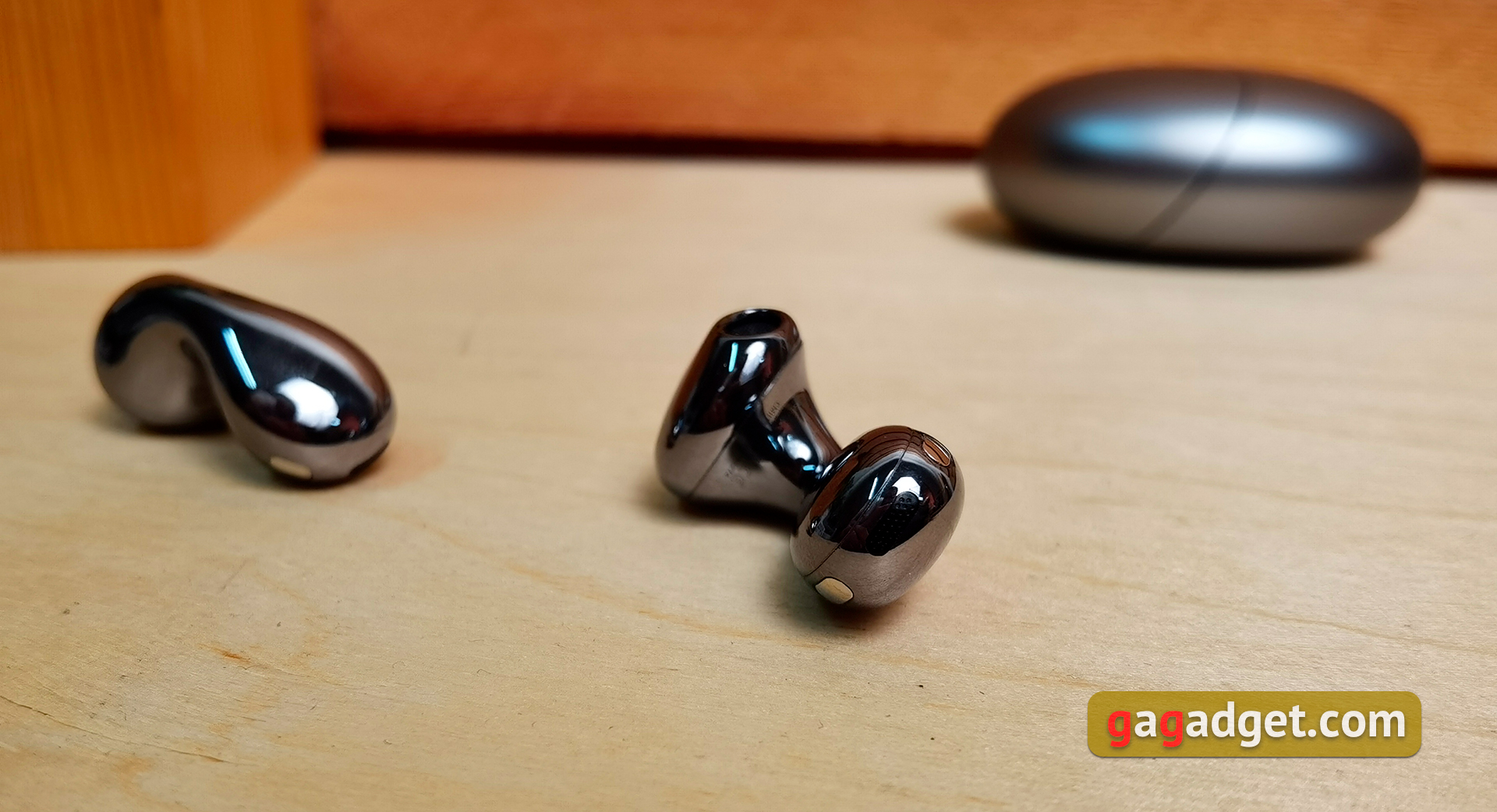
At the bottom there is another microphone for calls and charging contacts. For additional fixation, the headphones can be fitted with bundled silicone tips. The fit is very individual and depends on the size and shape of the auricles. I did not feel a significant difference. Huawei FreeBuds 5 are IPX4 water splash-proof, so you can wear them while doing sports. The weight of the headphones is 5.4 g, and they are almost imperceptible in the ears. Overall, the design is very unusual and original. Whether you like it or not is an individual matter, but it cannot be called boring.
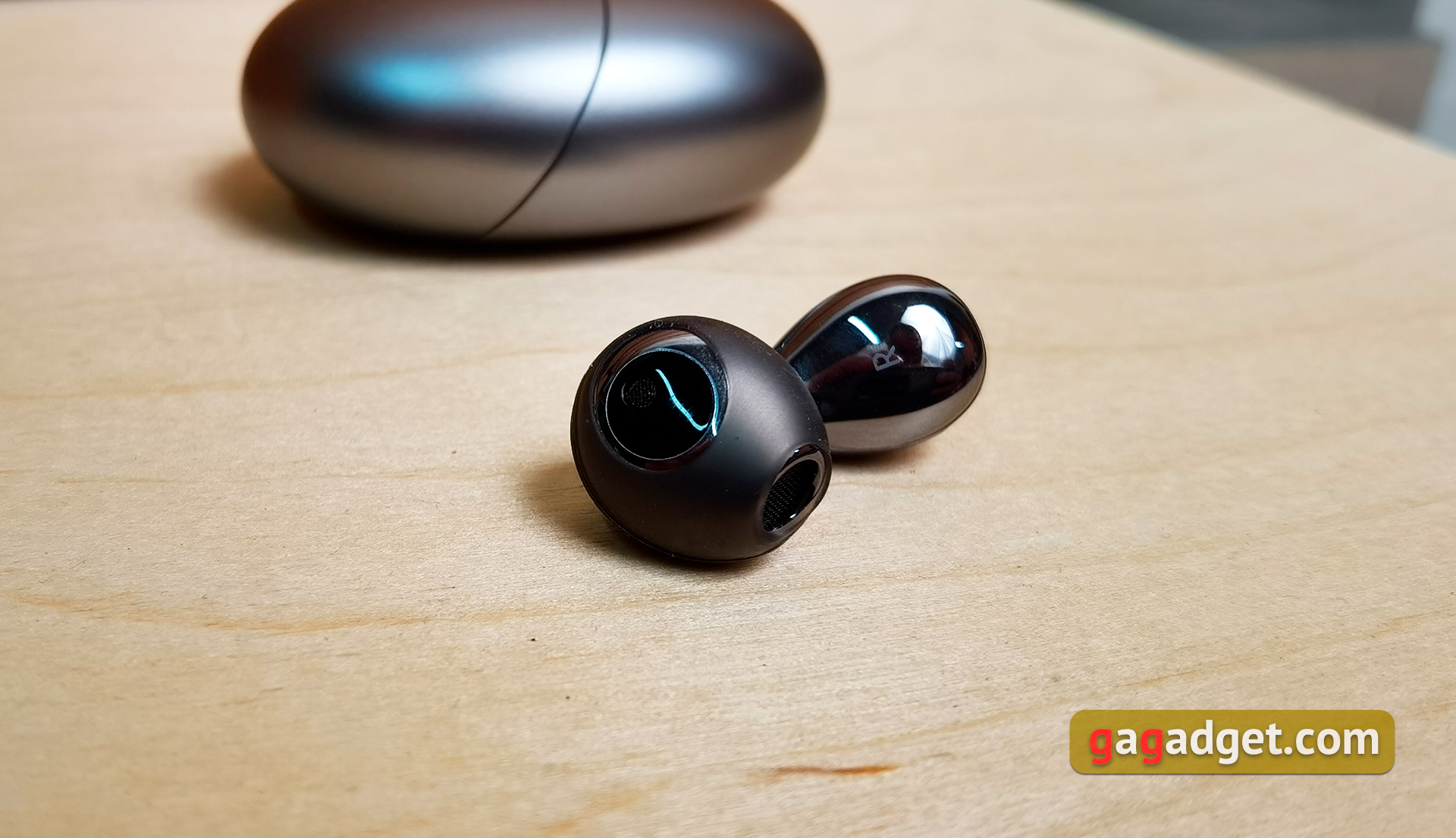
The charging case is shaped like a compressed egg. Unlike the headphones, it is matte, so it does not collect fingerprints and will look presentable for a long time. It weighs 45 g and thanks to its flat shape, it is easy to carry in your pocket. There is a charging and connection mode indicator on the front, as well as the Huawei logo.
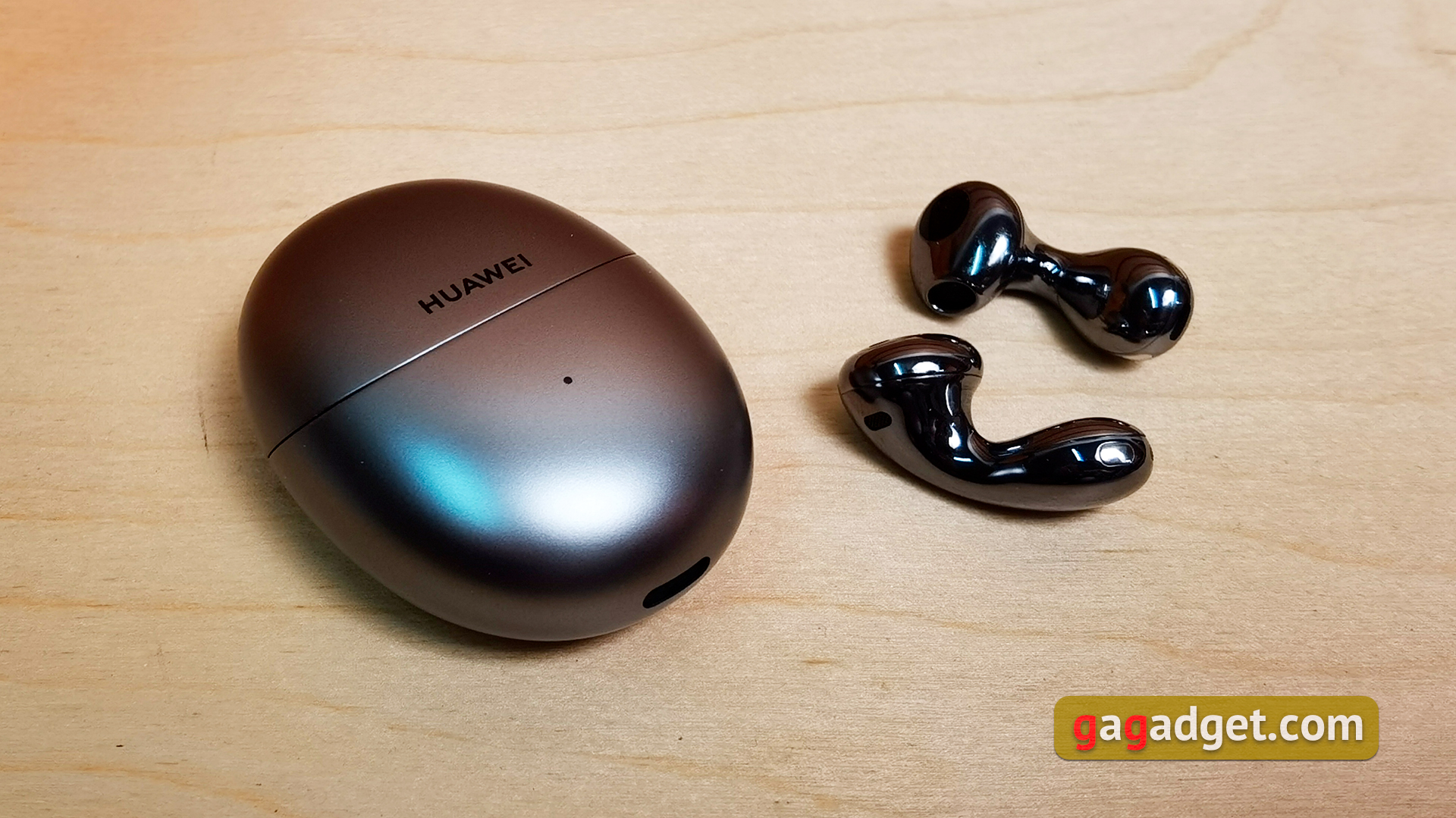
The lid opens very nicely, has a clear lock and auto-close in both extreme positions. It does not open when shaken. The headphones in the case are located in the appropriate recesses and are held securely by magnets. Thanks to their unusual shape, they are easy to take out. Even despite the glossy surface.
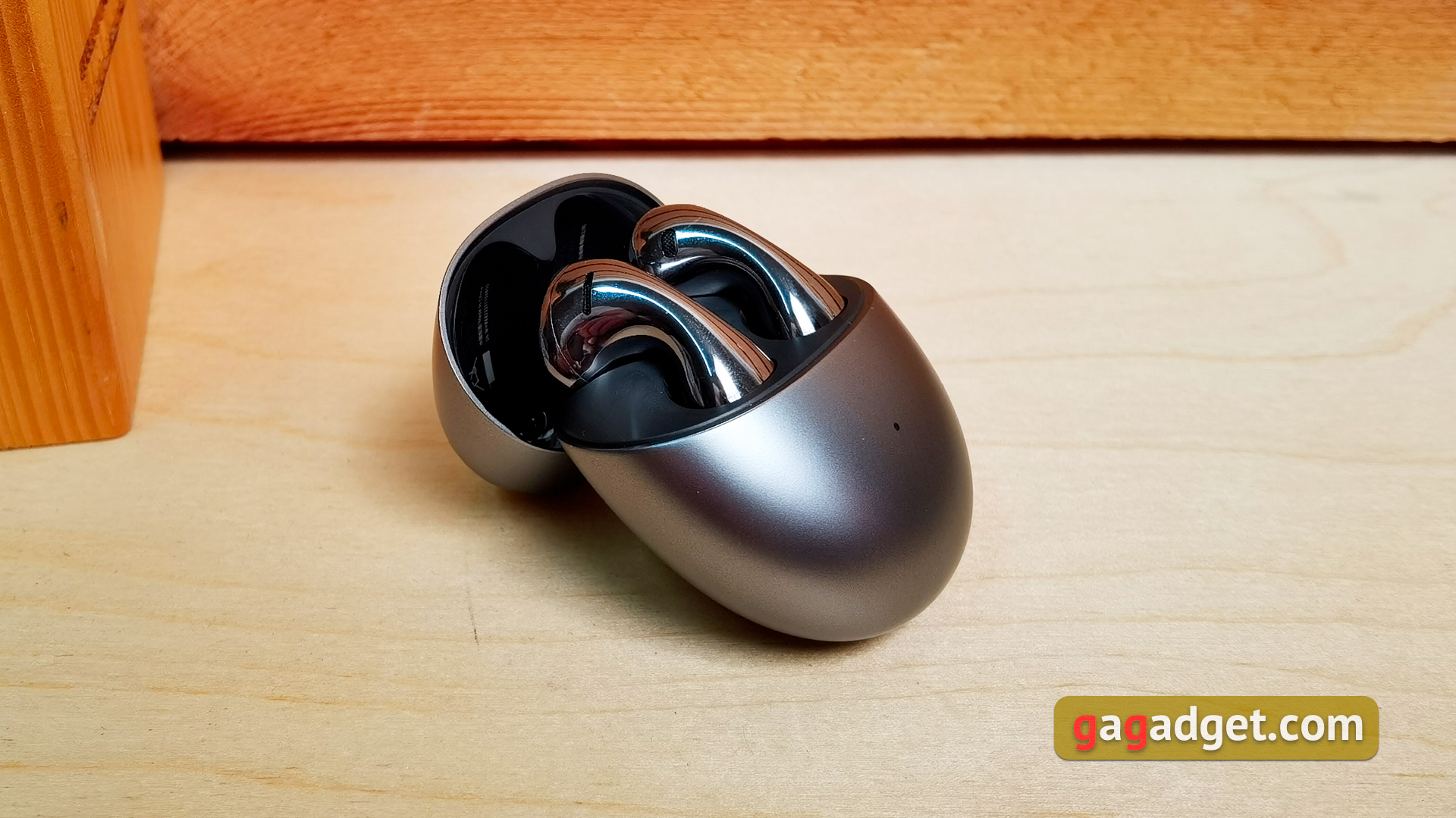
On the bottom of the case is a Type-C connector for charging, and on the side is a button to turn on the connection mode.

Is Huawei FreeBuds 5 easy to use?
Huawei FreeBuds 5 have an almost typical shape for in-ear headphones. The exception is the wider than usual leg. Which is actually convenient: there is a sensor on it that is easier to hit. The fit is usual for this design: the headphones almost do not go into the auricle. At the same time, they are fixed quite securely and do not press anywhere. After constant use of in-ear models, it seems that they are about to fall out, but this is not the case. They stay in place even while running. The weight is minimal, so it is quite comfortable to use them for a long time without taking them out. It is worth reminding you that these are headphones with an open acoustic design, so passive noise isolation is out of the question here. But there is active noise cancellation, which we will talk about a little later.
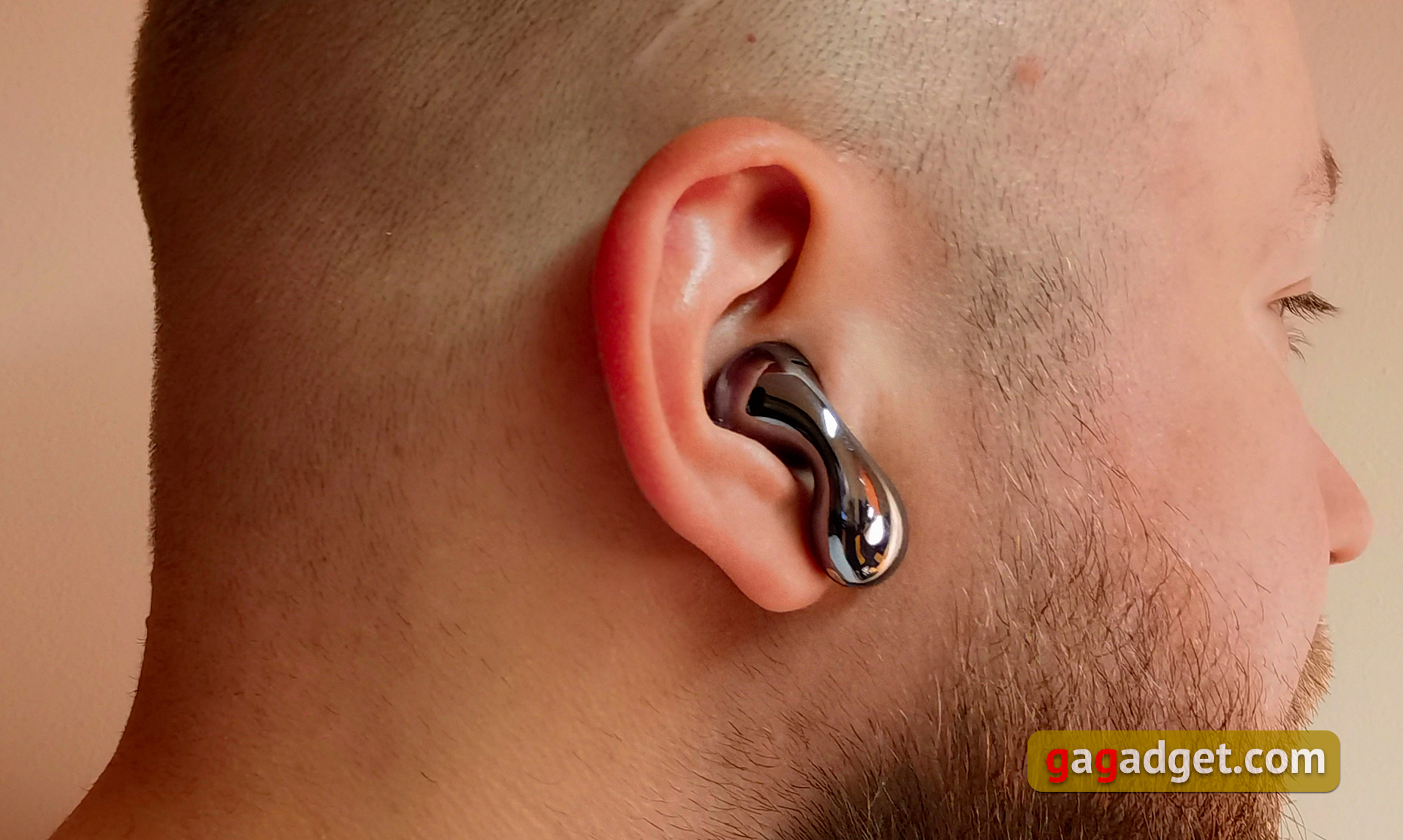
The headphones use an in-house developed SoC with Bluetooth version 5.2. To connect to a smartphone, you need to open the case and hold the side button for 2 seconds. The LED on the front will start flashing white. SBC, AAC and LDAC codecs are supported. The headphones do not support aptX, but this is not important, given the presence of LDAC. Among the useful additional features is the ability to connect to two devices Huawei FreeBuds 5i can work with Android and iOS. There is support for connecting to two devices simultaneously and automatically switching between them. There's also a game mode with minimal latency.
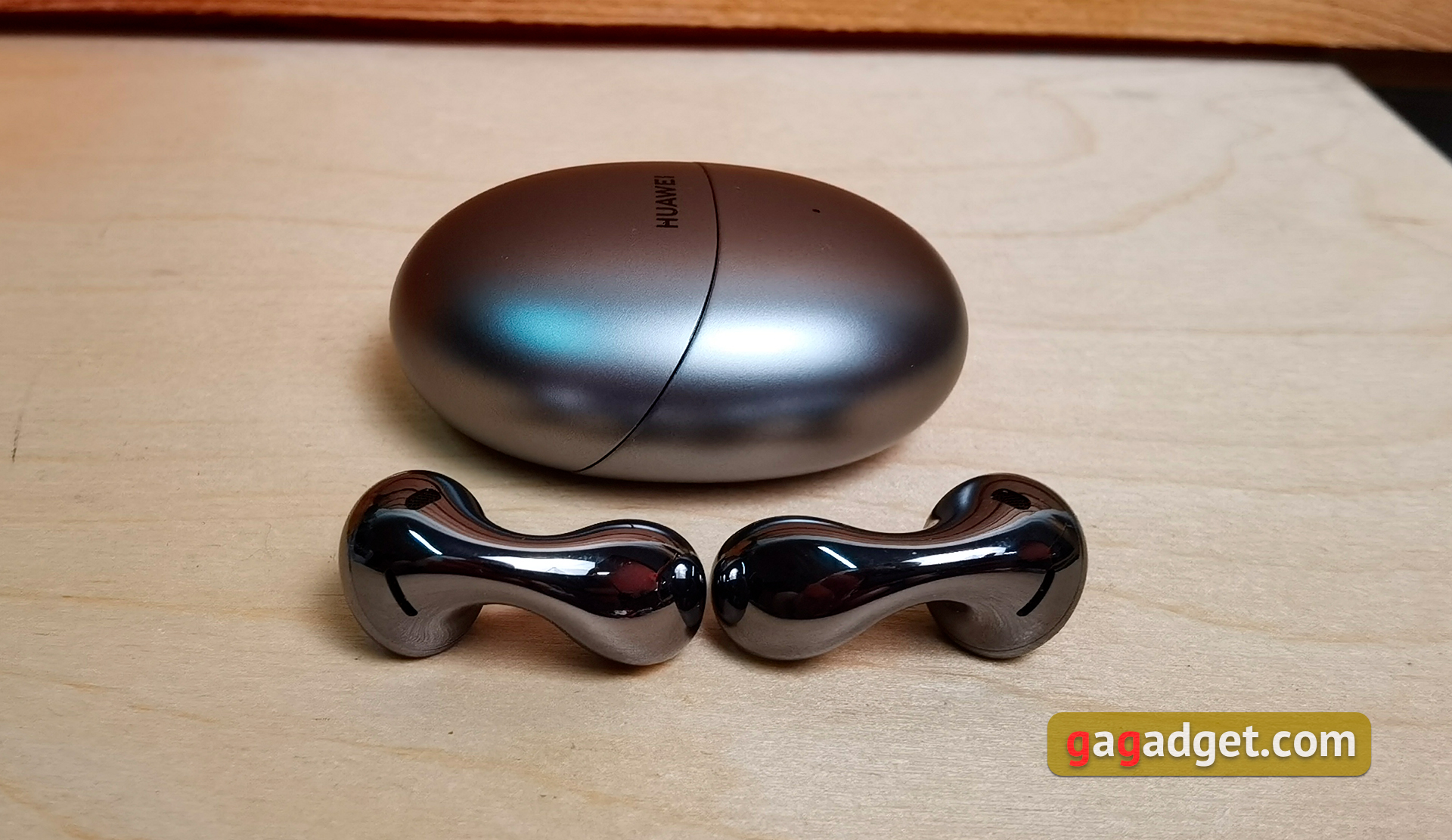
Of course, you can use the headphones simply by connecting them to your smartphone via Bluetooth. But to access all the functions, you need to install the Huawei AI Life app. It's not available on Google Play, and to download it, you need to scan the QR code on the box, or simply find the APK file using Google. When used with Huawei smartphones, there are additional convenient little things like pop-up widgets with the headphone charge level. The app has information about the charge of the headphones and the case. There is a switch between connected devices and a priority selection. The active noise cancellation system has three operating modes. Comfort (for quiet places), Balanced (maximum noise reduction) and Dynamic (automatic adjustment). There is no transparency mode, but it is not needed here: the headphones have an open acoustic design, so you can hear surrounding noise well. There is a separate section with a choice of transmission quality and equalisers, as well as the "Call in HD" function. In practice, there is no dramatic difference when making calls. There is a headphone search function that allows you to play sound on each of them, as well as wearing detection: playback will be automatically paused if you remove the earphone from your ear.

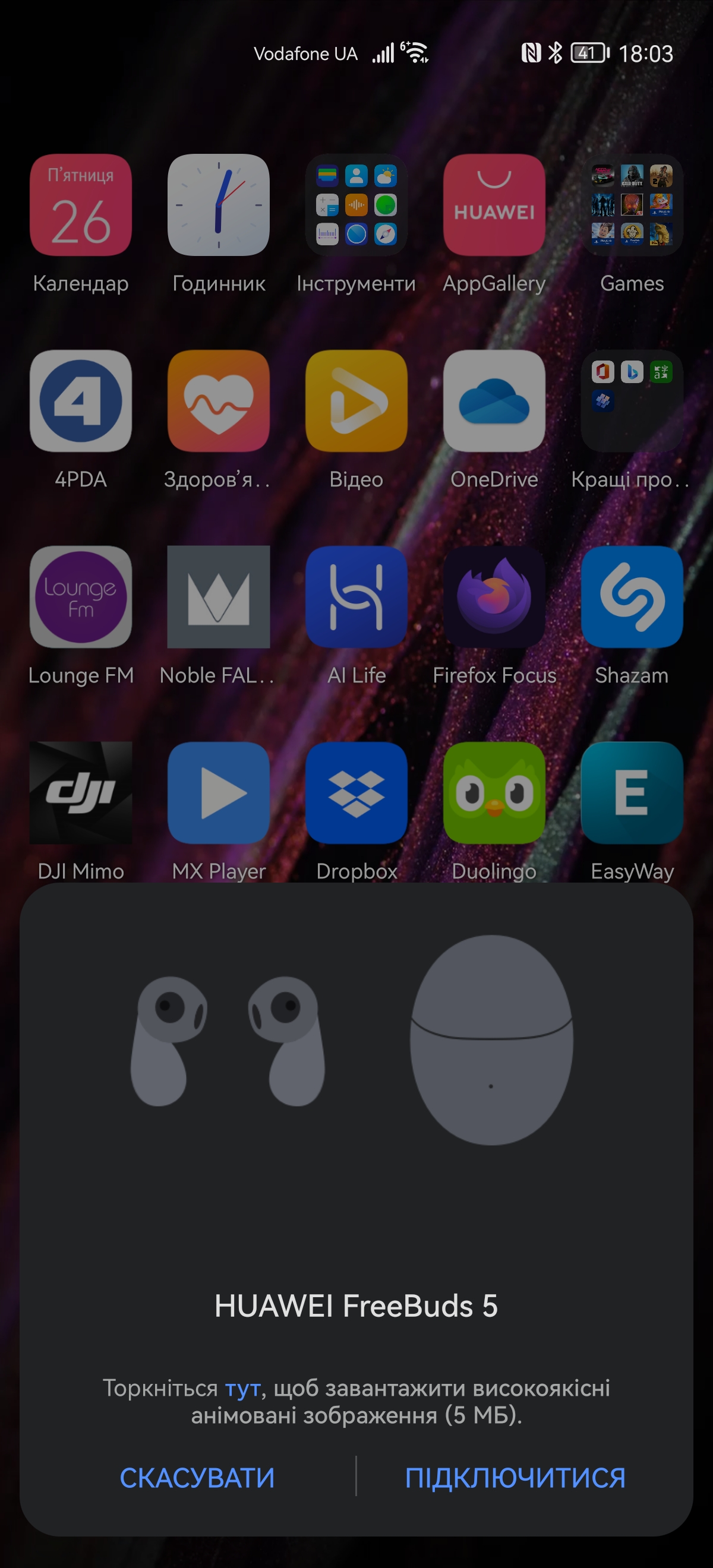
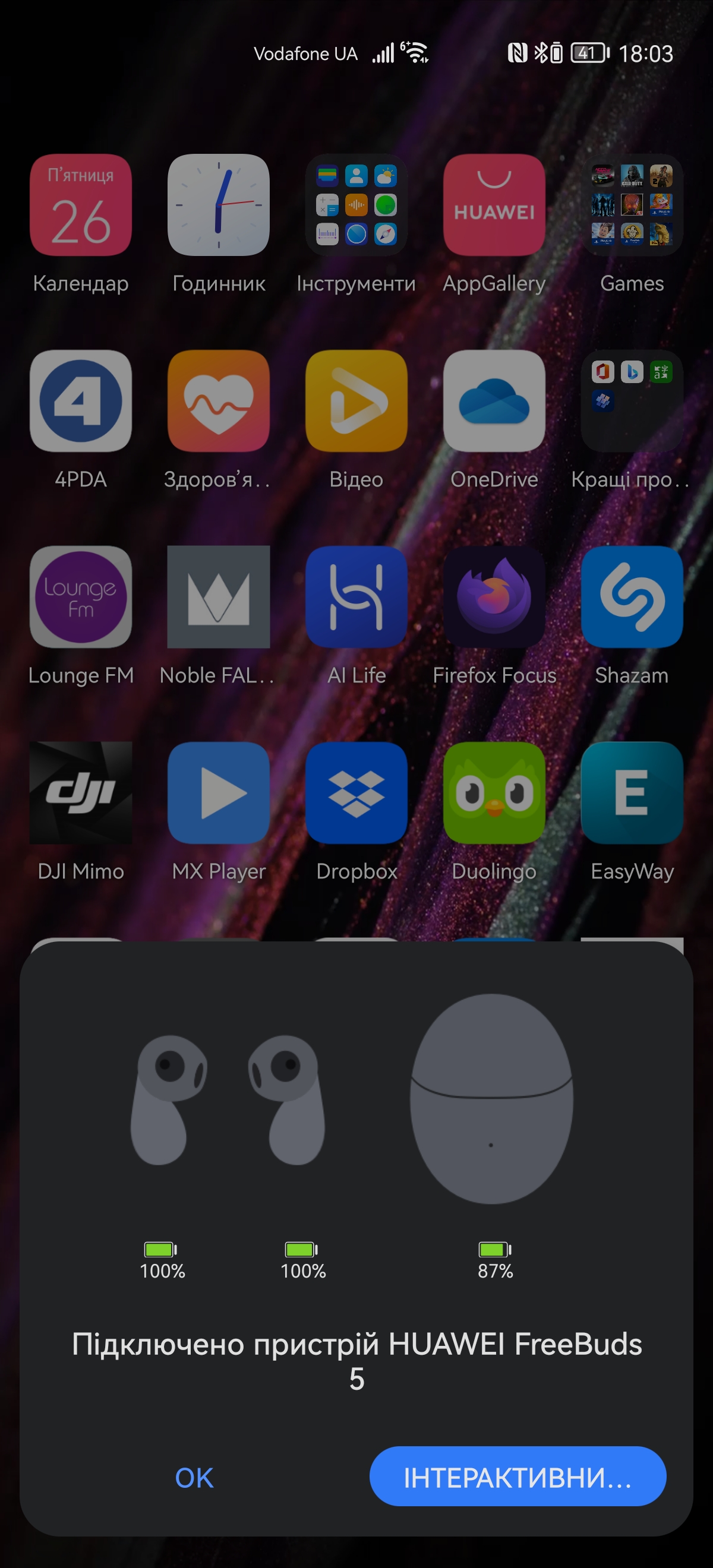

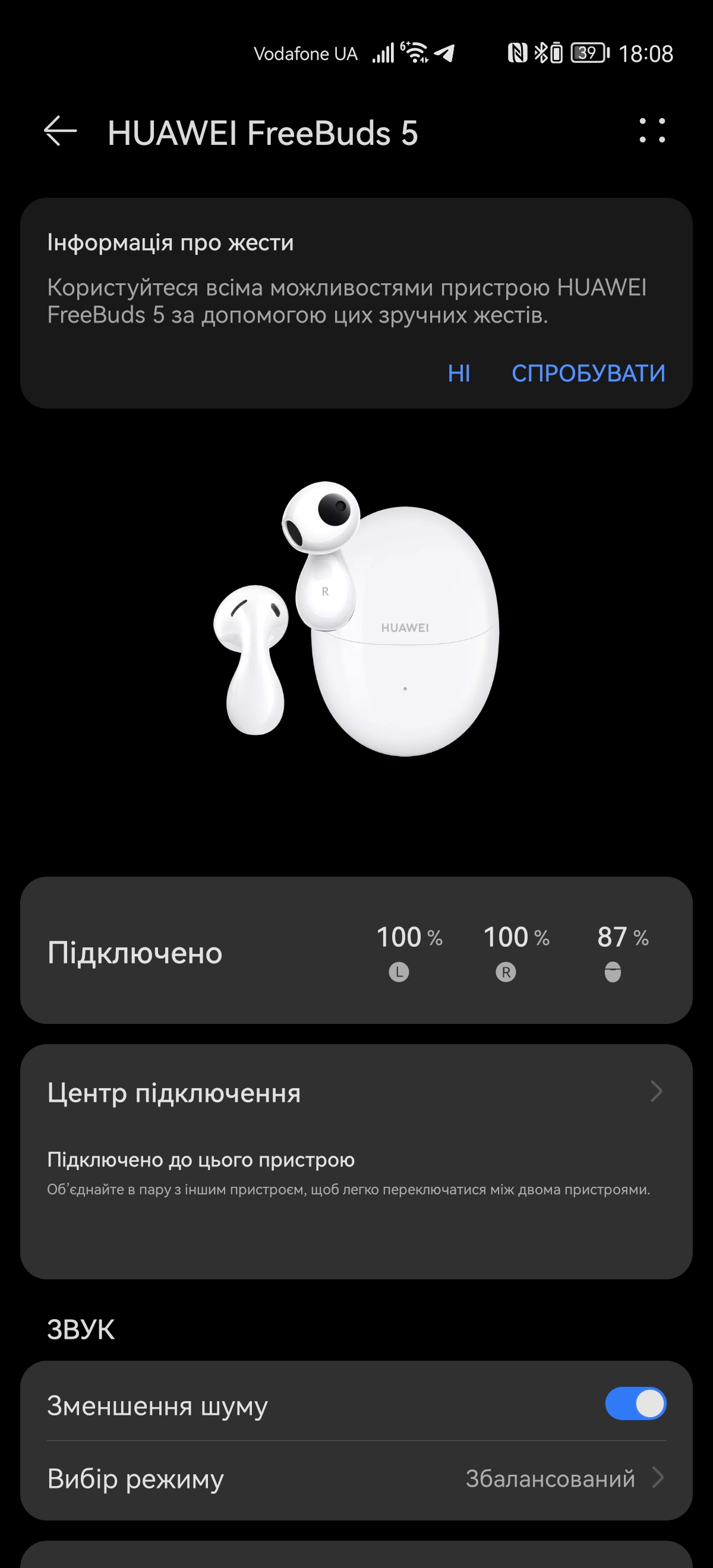
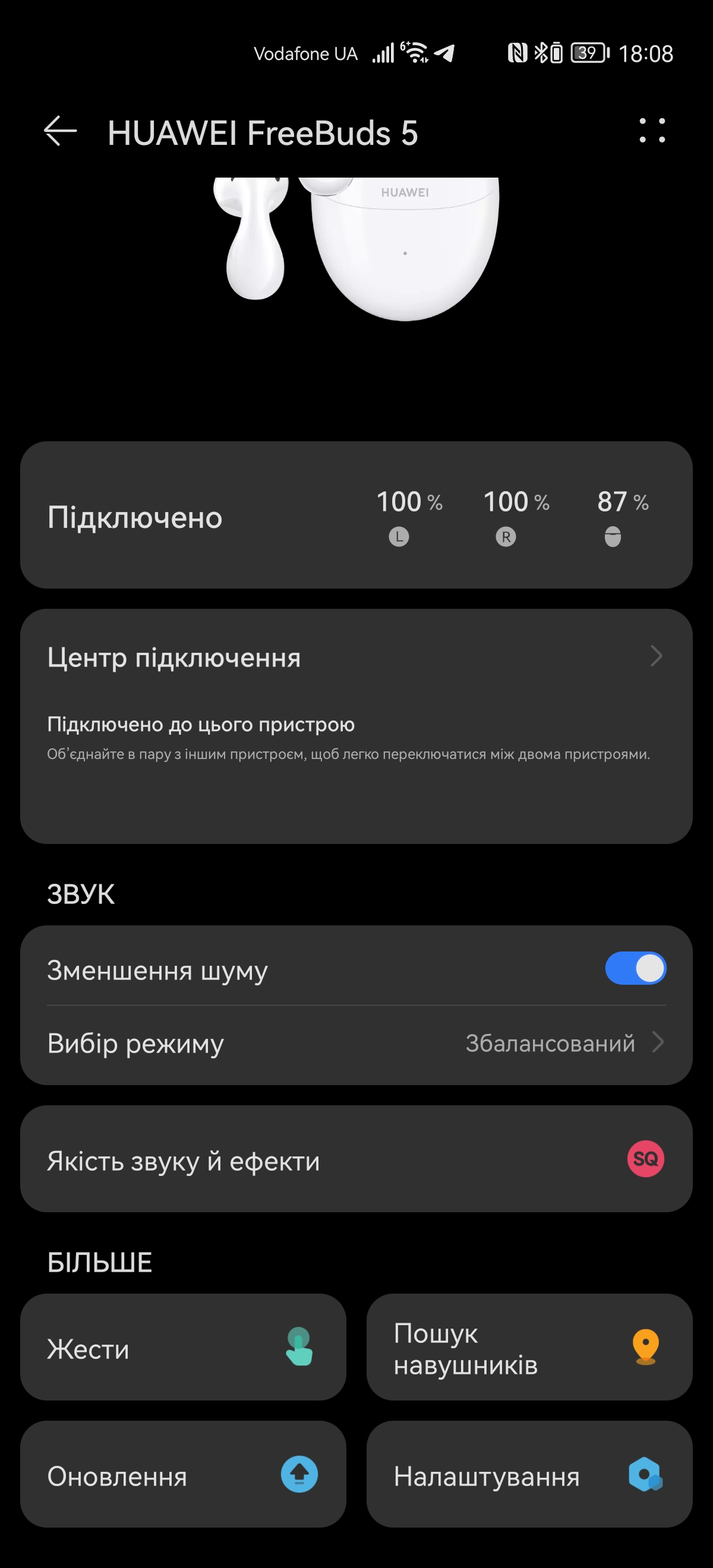


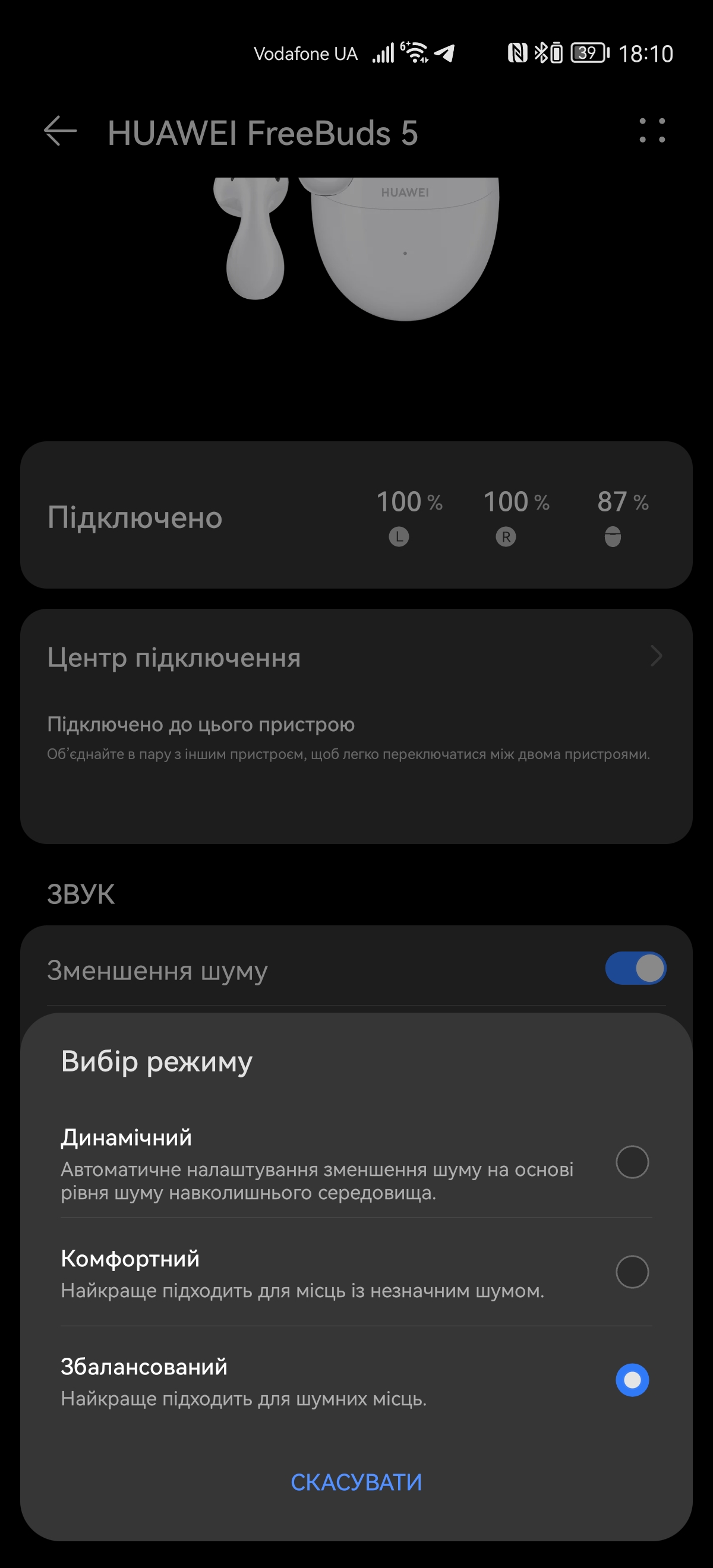













The touch controls in Huawei FreeBuds 5 have a quite familiar scheme. By default, a double tap on the right earbud is responsible for pausing and playing (or accepting/rejecting a call), and on the left earbud - switching to the next track. Long press to switch off noise cancellation. Swiping up and down is responsible for adjusting the volume.

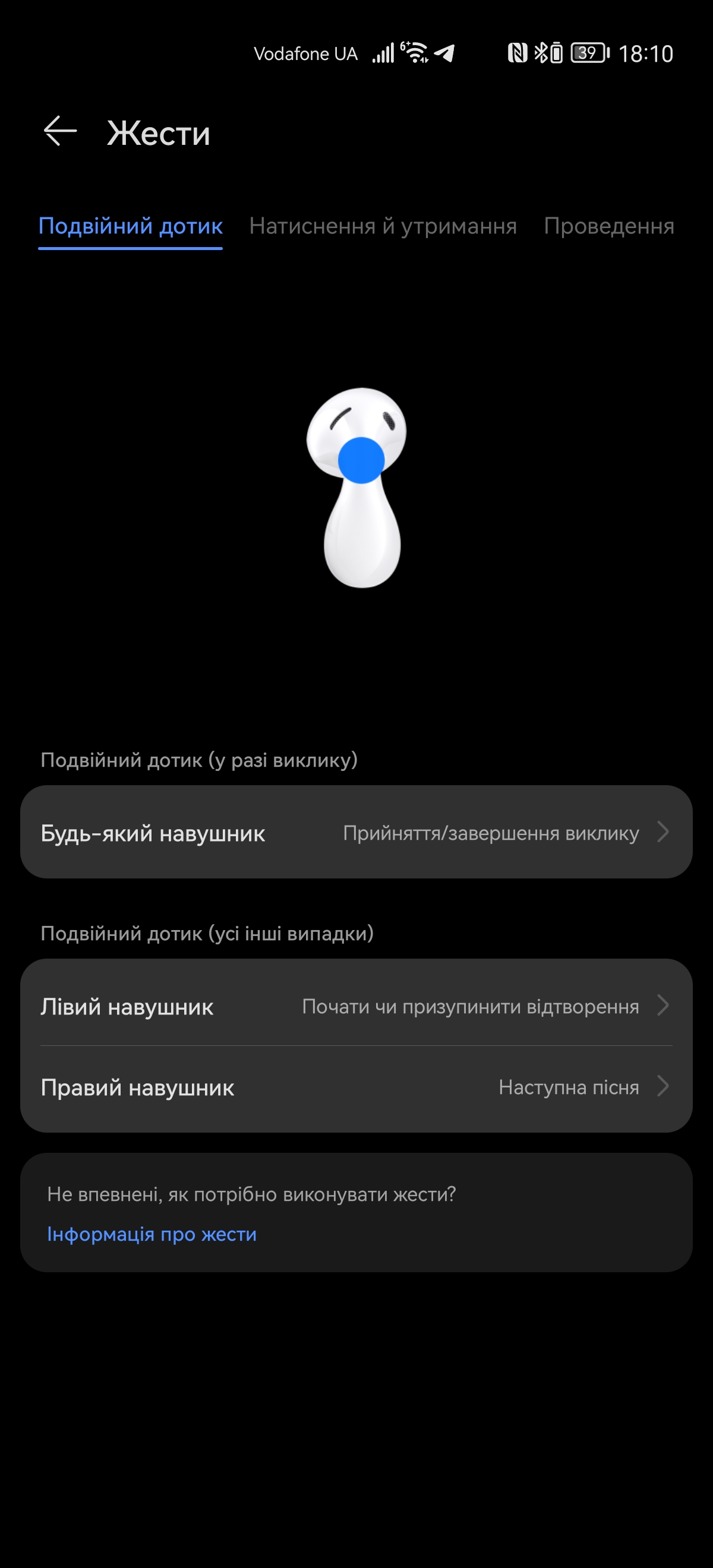






What about sound quality, microphone and noise cancellation?
Huawei FreeBuds 5 headphones are equipped with a dynamic emitter with two ring magnets and an 11 mm diaphragm. Huawei claims that the HUAWEI FreeBuds 5 are 30% better at reproducing low frequencies than the HUAWEI FreeBuds 4, and the frequency range is from 16 Hz to 40,000 Hz. Additionally, a specific design is mentioned that allows more air to flow in. Due to this, the diaphragm experiences less resistance during vibration, which leads to an increased resonance effect. It also uses an algorithm to optimise sound in real time using built-in microphones. They record the sound returning to the ear canal. According to the developers, FreeBuds 5 performs frequency compensation from 100 to 2000 Hz within 2 seconds to adapt the sound to the unique characteristics of each person. The sound is tuned to the open design. The earbuds do not transmit the low-frequency range very well, and the developers of FreeBuds 5 decided to compensate for this by increasing the number of low frequencies. The sound of the headphones was a pleasant surprise. They sound better than the vast majority of competitors with a similar design. There are enough bass frequencies, they are massive and powerful, well readable and do not turn into mush. The midrange is reproduced with very good detail. High frequencies and sound clarity are also sufficient, which is facilitated by the open design. At the same time, they are not harsh and do not strain the hearing at all during prolonged use. The frequency response of the headphones is typical V-shaped. In general, Huawei FreeBuds 5 are pleasant to listen to most music, but they play a variety of electronica, pop music and hip-hop best of all.
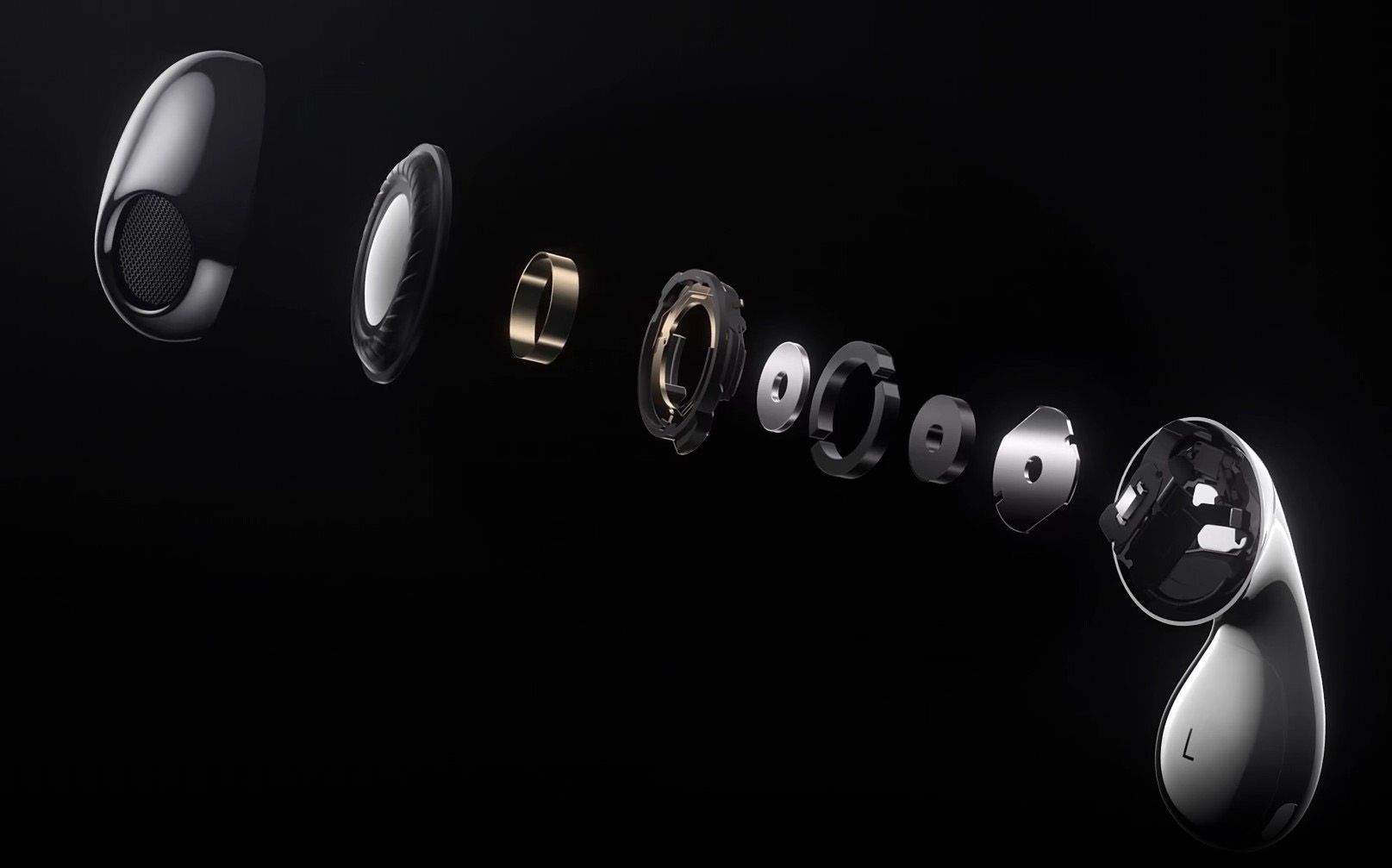
Huawei FreeBuds 5 have ANC 3.0 active noise cancellation. But it is worth remembering the design features and not expecting the level of silence as in closed models with ANC. However, it is worth saying that the system works surprisingly well, adequately muffling the monotonous low-frequency rumble of the street, which allows you to comfortably listen to music without being distracted by others. But the headphones are not able to remove the noise of the subway.
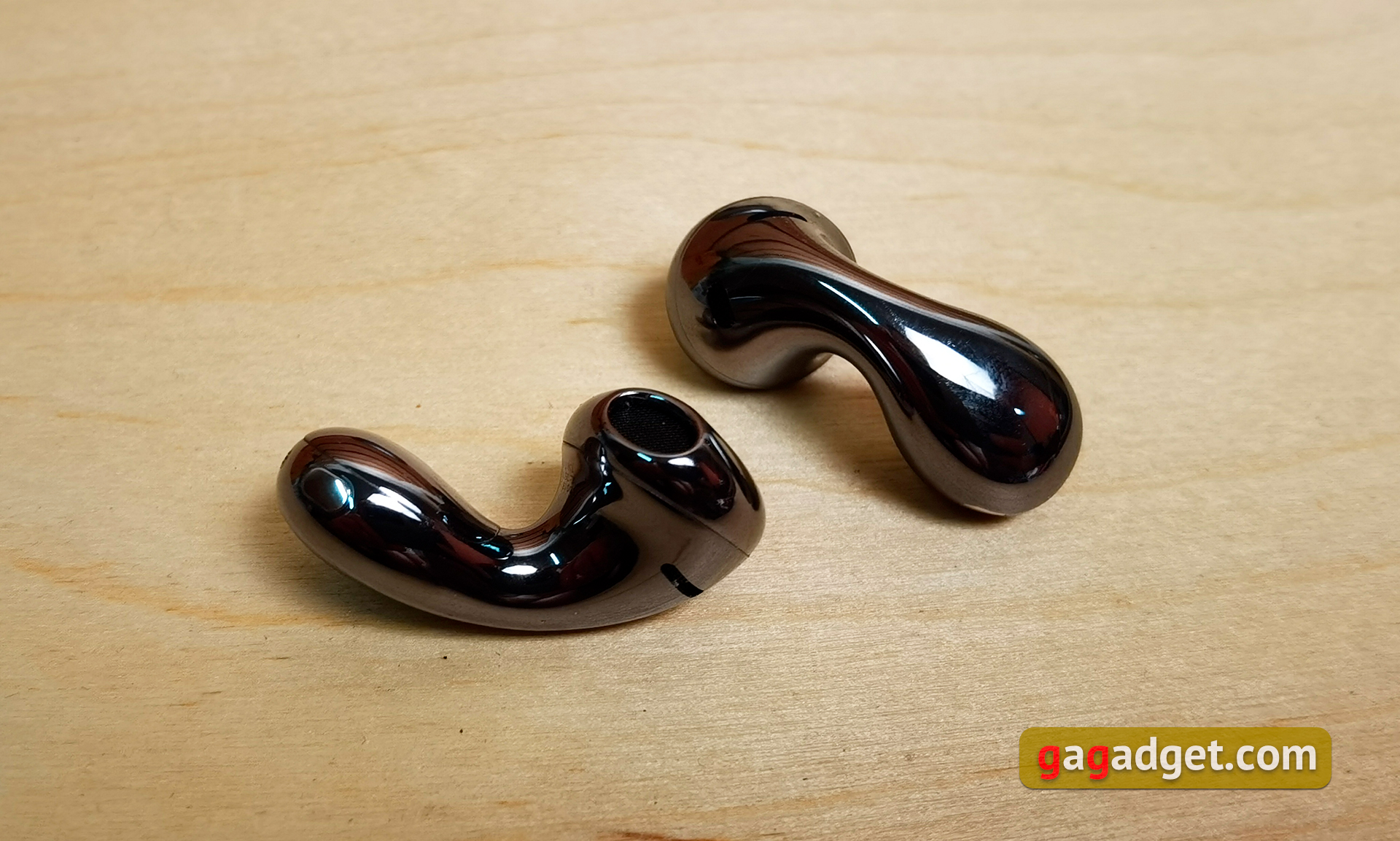
During conversations, noise cancellation based on a neural network (DNN) is used to enhance your voice and reduce background noise. Talking is really comfortable in most situations: at home, in the office, on the street or in public transport. It's difficult in the subway, but that's true for the vast majority of TWS headphones.
How long do they last without recharging?

The battery life of the headphones is average. Huawei promises that the headphones can work for up to 5 hours without active noise cancellation and up to 3.5 hours with it. Together with the case, the operating time can reach 30 hours without ANC and up to 20 hours with it. Huawei FreeBuds 5 charge very quickly. There is support for fast charging: 5 minutes in the case will provide 2 hours of music without ANC. It takes only 20 minutes to fully charge the headphones and 40 minutes to charge the case. So the mediocre battery life is fully compensated for by very fast charging. There is also support for wireless charging, but the speed is significantly slower. In real conditions, using the LDAC codec, the headphones last a little over three hours on a single charge.
To summarise: three things you need to know about Huawei FreeBuds 5:
- Huawei FreeBuds 5 are lightweight and comfortable in-ear TWS headphones with an open acoustic design.
- They have very good sound quality, given the form factor.
- They are protected against dust and moisture according to the IPX4 standard.
| Huawei FreeBuds 5 | |
|---|---|
| Emitters | 11 mm dynamic drivers |
| Range of reproduced frequencies | 16 Hz - 40,000 Hz |
| Form factor | earbuds with open acoustic design |
| Connections. | Bluetooth 5.2, SBC, AAC, LDAC |
| Range of action | 10 м |
| Connector for charging | USB Type-C |
| Battery. | Headphones: up to 3.5 hours with ANC, 5 hours without. With case: up to 30 hours |
| Additional features. | IPX4 protection, active noise cancellation, wireless charging |
For those who want to know more:
- Huawei FreeBuds 5i review: in-ear TWS headphones with active noise cancellation
- More business and less noise: Ugreen HiTune X6 TWS headphones review
- Hello, Hi-Res Audio without wires! Review of the flagship TWS headphones Samsung Galaxy Buds2 Pro
- Devialet Gemini review: TWS headphones with French charm
- Translator as a killer feature: review of Xiaodu Du Smart Buds Pro in-ear TWS headphones
